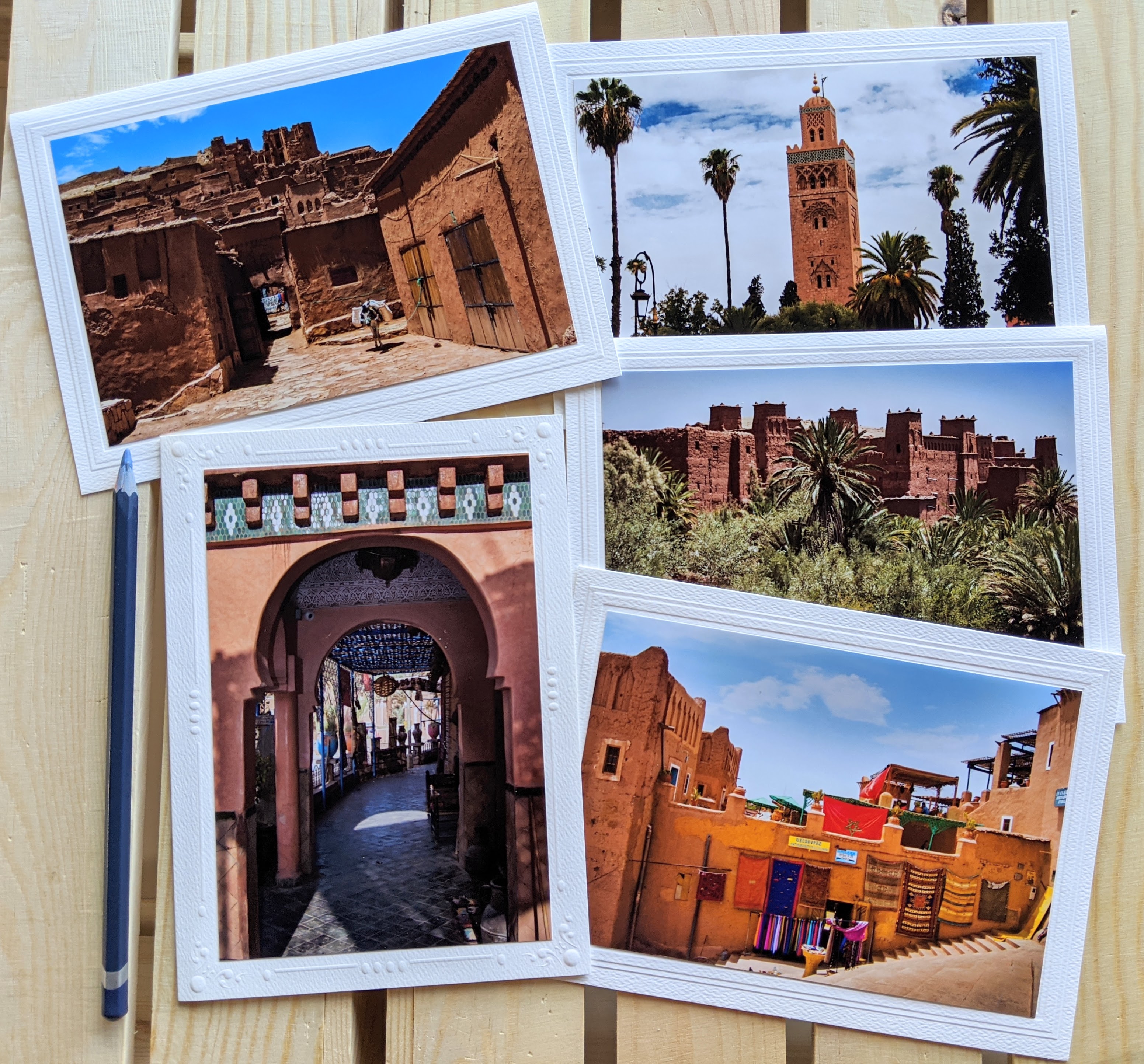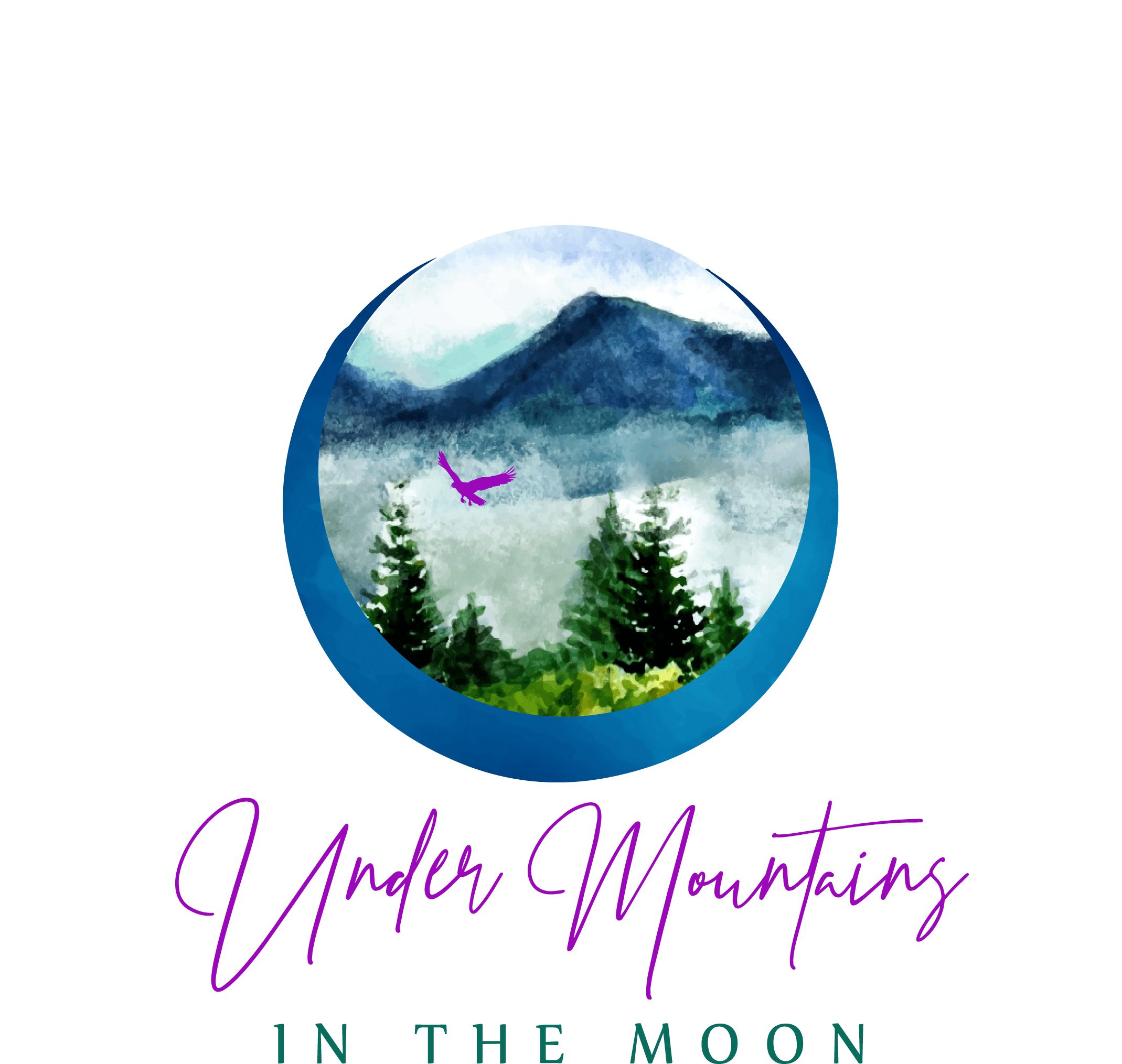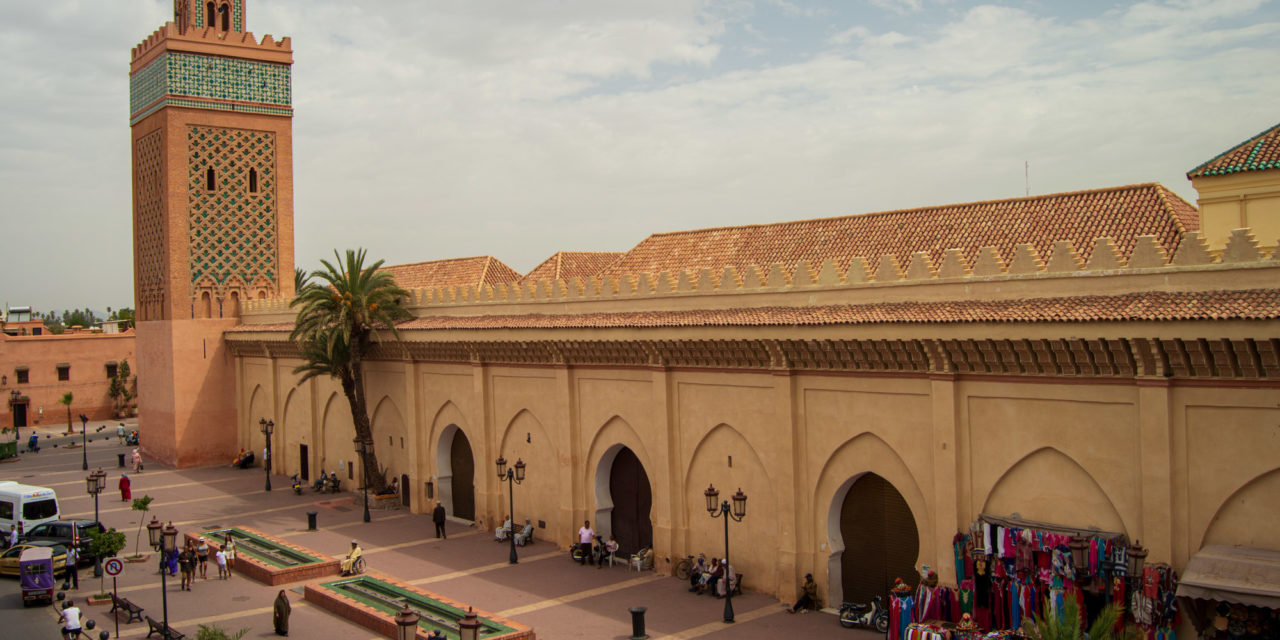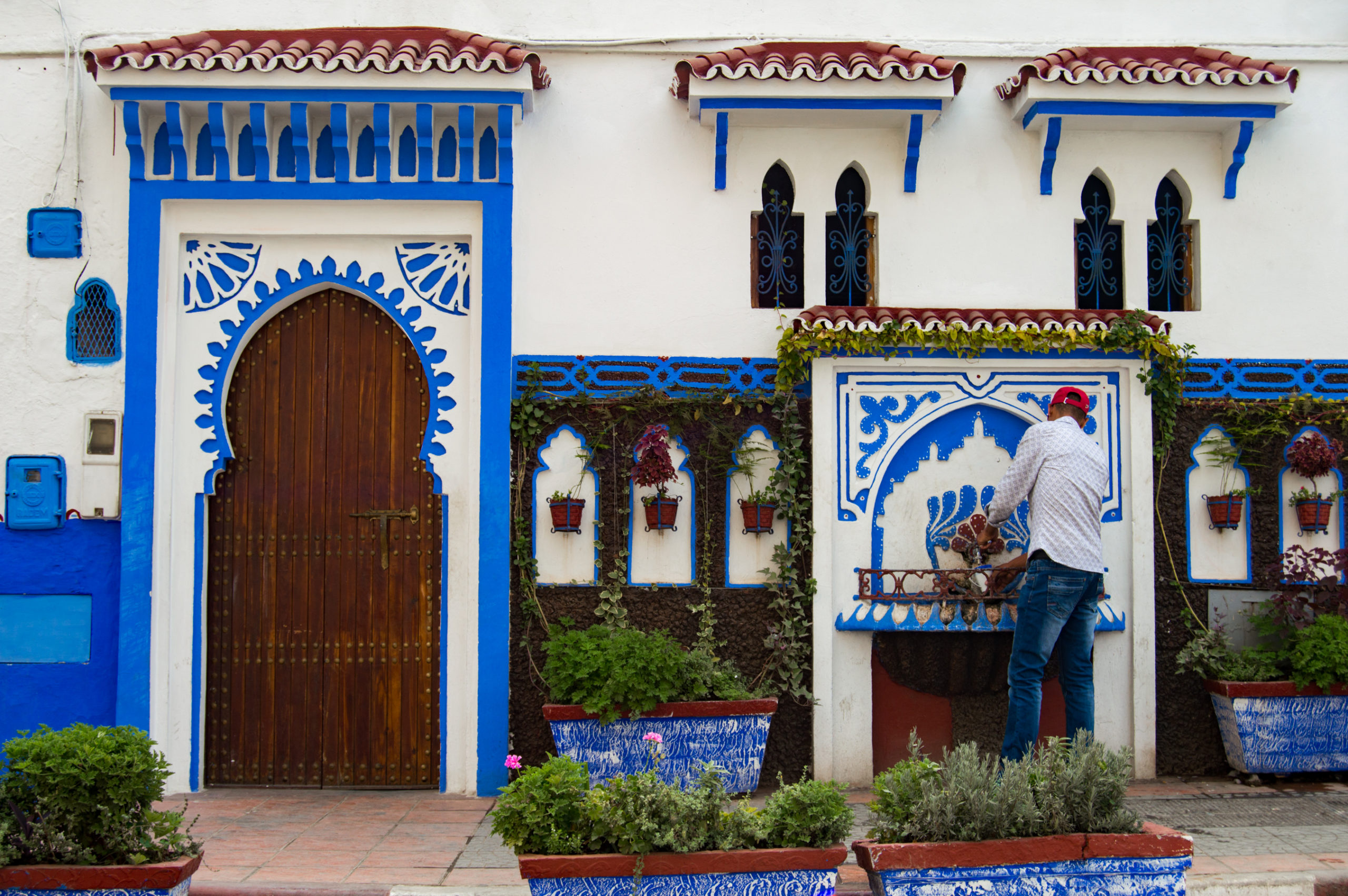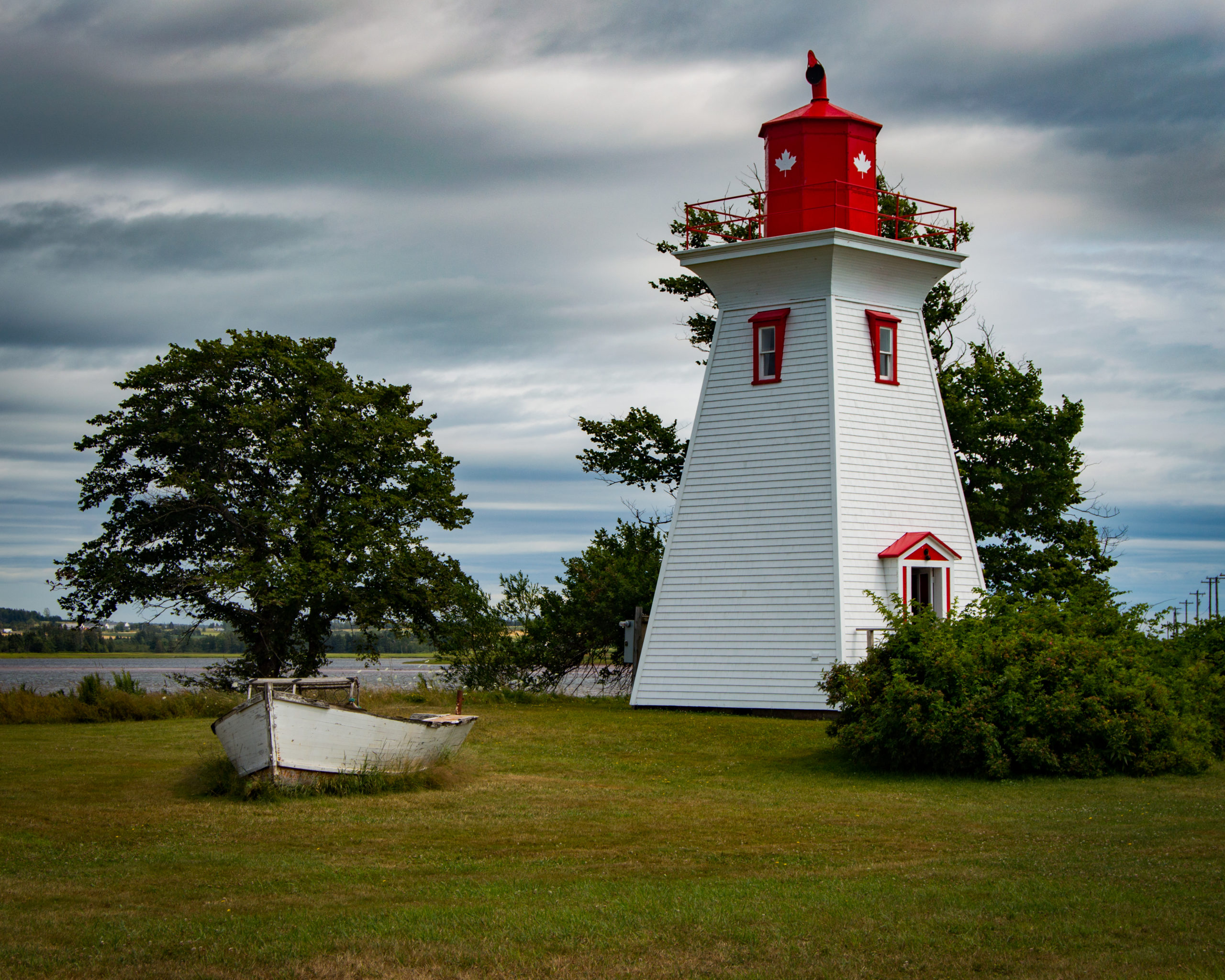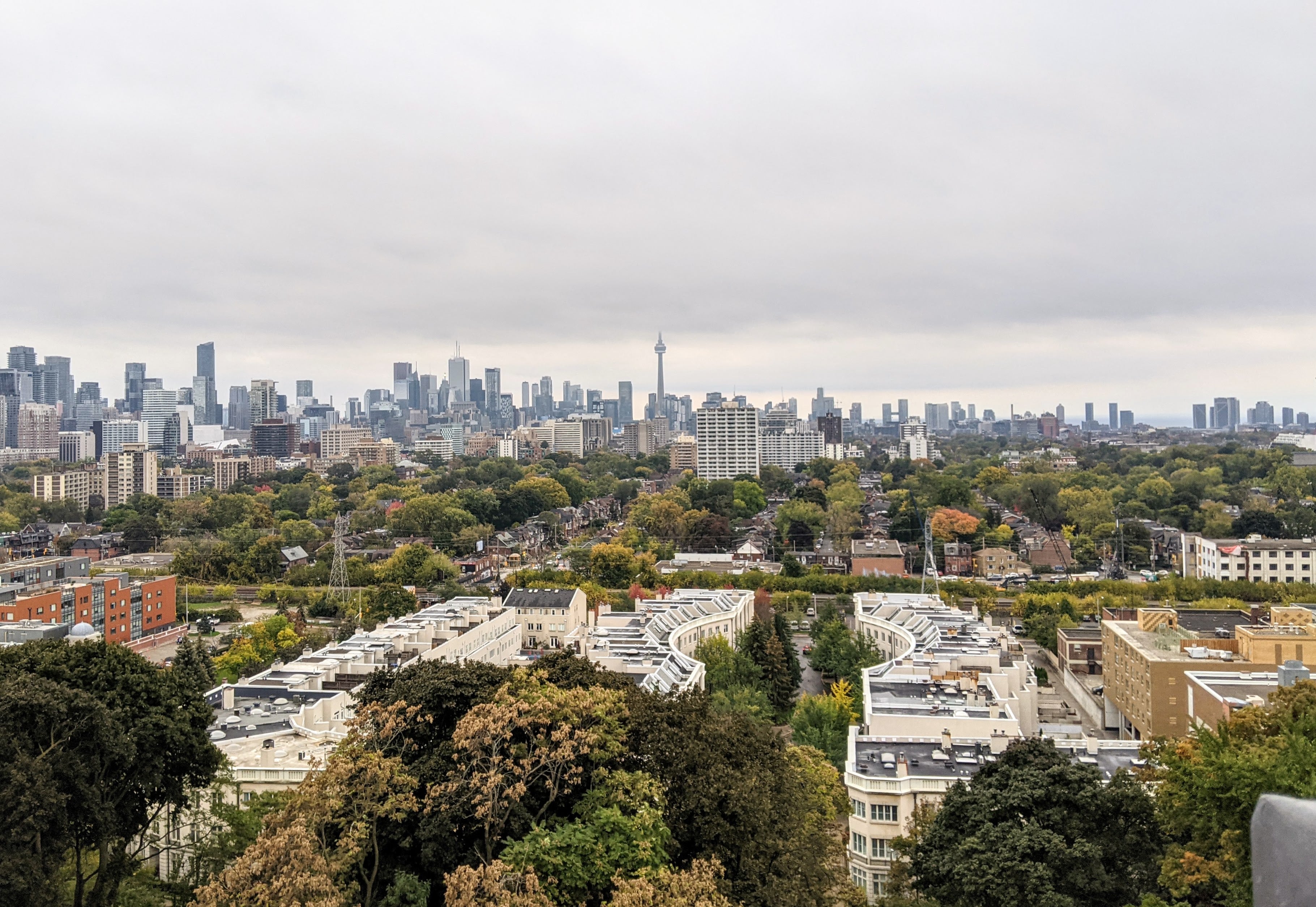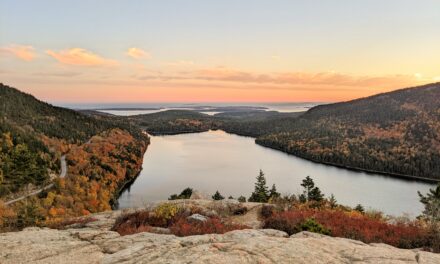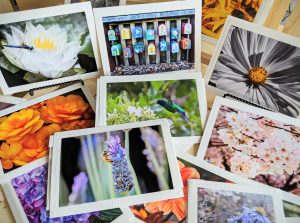Long ago, in the year 1062 to be exact, the Almoravids, a warrior dynasty of nomadic Berber, decided to settle near the foothills of the Atlas Mountains and found the capital of their empire, naming it Marrakesh. The city became famous amongst merchants inside and outside the empire, which extended across all North-west Africa and the South of Spain. It soon became one of the major trading centers in the Islamic world of the Middle-Ages.
Today, after having survived famine, droughts, plague, sacks, and rebellions, Marrakesh still preserves that merchant tradition that once attracted artisans and dealers from Africa, the Middle-East, and India. Its traditional market is the largest in Morocco and, like many of its visitors, is what first drew me to visit this amazing country.
My friends and I experienced Morocco’s commercial-minded culture right from the moment we got out of the airport, when around ten different taxi drivers approached us to offer the best price for a ride to our hostel. We didn’t even need to participate in making a fair deal, as they kept yelling lower and lower prices until the competition stopped, and only one guy remained. He drove us to Bab al Ksour, one of the 20 city gates along the walls of the Medina and, apparently, the favorite place to drop off tourists, for there were a few men already lined up to offer us another ‘great deal’ on carrying our backpacks to our hostel in one of their wooden wheelbarrows.
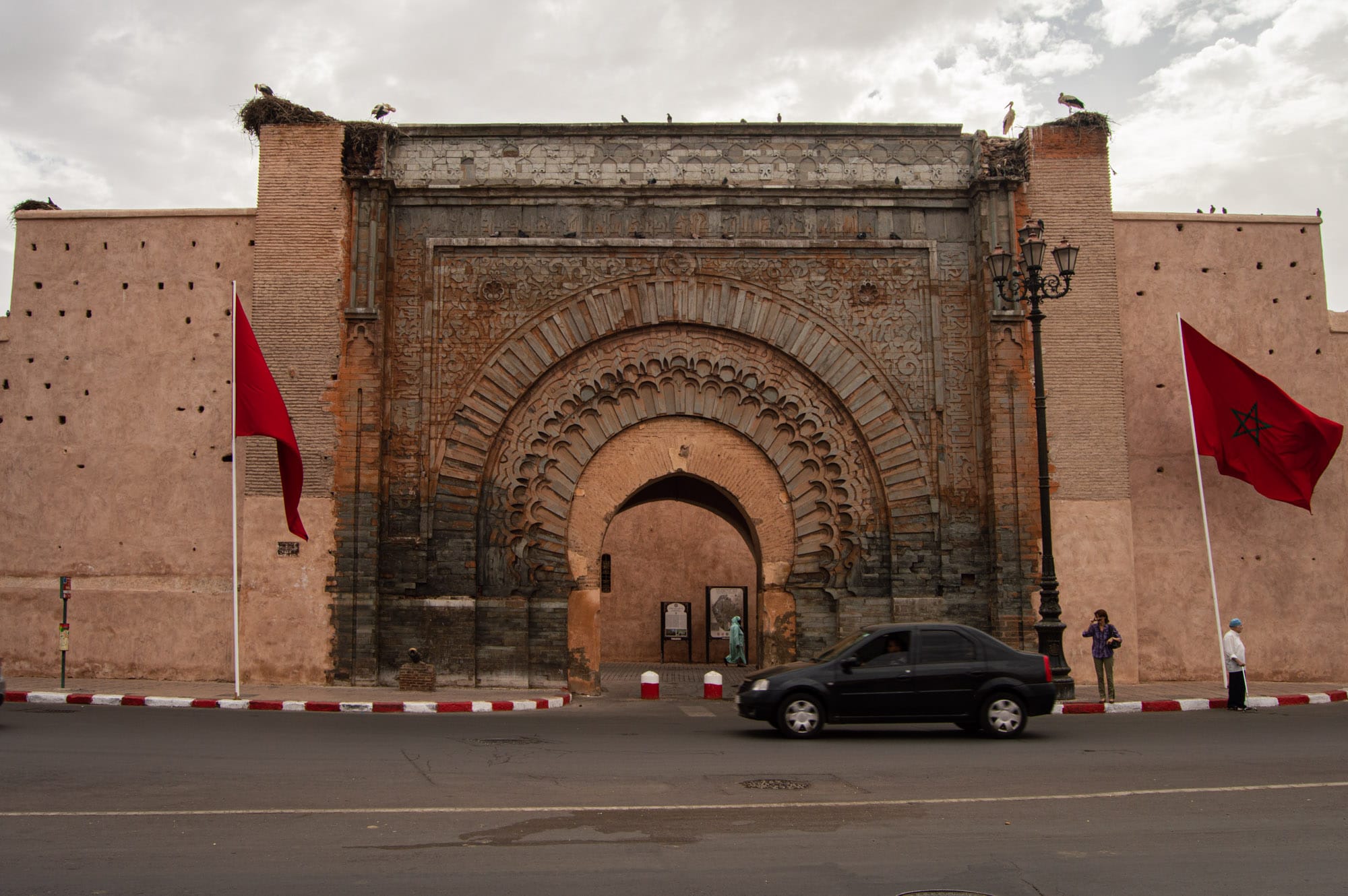
Bab Agnaou, one of the many city gates into the Medina of Marrakesh.
The Medina, or Old Town of Marrakesh, is the fortified quarter of the city. The Almoravids erected its walls to defend themselves from the Almohad attacks, stretching them for almost 30 kilometers around the medieval city. The clay used in their construction is made from the Saharan sandy soil and contains intense orange-pink pigments. For the next centuries, the people of Marrakech used this same clay to build their houses, mosques, and palaces, which at sunset reflect the reddish color that made this old capital be nicknamed the Red City.
Our hostel, an affordable, cozy, and welcoming oasis called Riad Dia, was in the center of this Medina. Our first adventure was to navigate the narrow alleys, tunnels, and dead-end streets around it. Finding our way around the city was even harder when asking for help, for there was no person in Marrakesh who didn’t want to ask us for money after giving us directions. Most of the time, they said the places we were looking for were closed or surrounded by the police and instead offered us deals to take us to better attractions. Luckily, we were previously warned to ignore these deals and, in a short time, we found the famous Market.
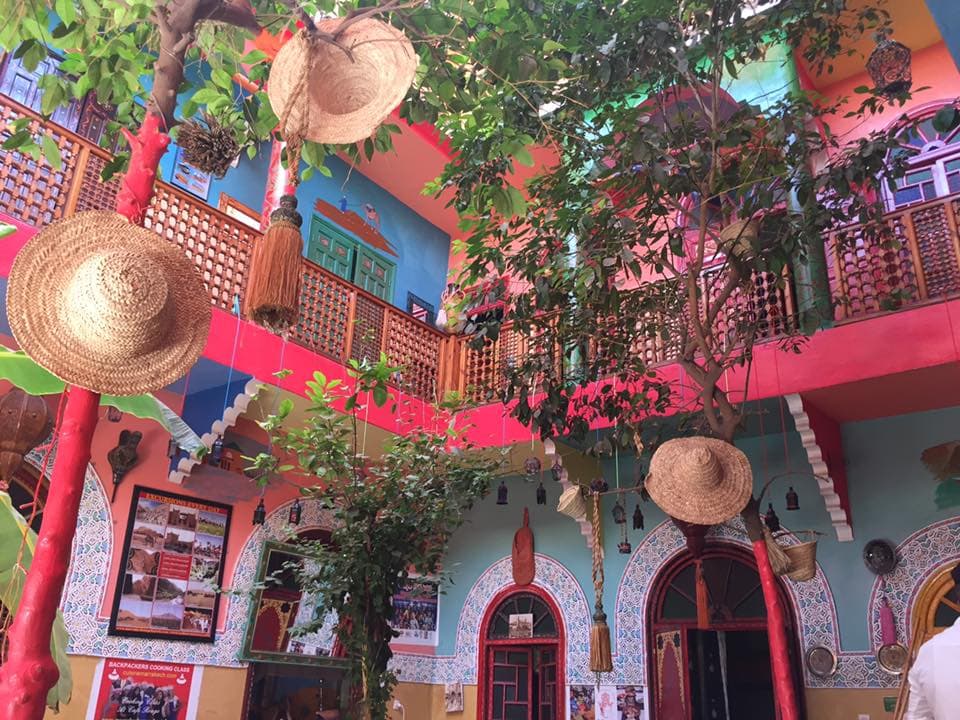
Riad Dia Hostels. Riads are traditional Moroccan buildings that became popular in Al-Andalus. Their characteristic courtyards in the middle of the complex give the residents their own private, open space.
Now, there’s not just one big Market of Marrakech. Instead, the Medina has a commercial area composed of many markets— or souks— that specialize in different products. It is hard to tell when one souk begins and the other ends, making the place feel like an endless single market.
Entering the souks felt as if we’d gone back in time to when caravans crossed the Sahara Desert or sailors traveled along the Strait of Gibraltar to make their living out of trading goods in this same spot. The Market smells like incense and spices, and though you can no longer find ivory, gold, or precious jewels, you’ll find all sorts of handcrafted items like metalwork, clothes, scarfs, dyed wool, and tapestries. There are also souks with regional dried fruits, seeds, and spices; and there’s even a black magic souk with powders, dried scorpions, snake skins, and other tokens.
When you enter a shop in the souks, it’s a tradition to be offered tea. It’s the way to start negotiations, and that’s how we ended up bargaining for almost an hour with Mohammed, talking about his teapot business, the city, and the market. Apart from great prices and traditional Moroccan tea, he offered us some great advice about how to survive negotiations in the souks: “If you come in talking in French or English, sellers will automatically know you are rich and give you higher prices. People who speak Spanish and Portuguese are poor, like us, so we’ll give you the best deals.”
Coming from different Latin American countries, my friends and I really appreciated the sense of fellowship between our poor countries. But my personal advice is that you can win everyone’s friendship in the souks by learning a few words, such as please and thank you in Berber or Arabic. Also, learn to say ‘no’ when vendors are pushy. As a Mexican, this was natural to me, but we saw many tourists buying useless items because they felt guilty rejecting the vendors. Marrakech is a market town, so bargaining and being chased by merchants around the souks is a kind of social etiquette.
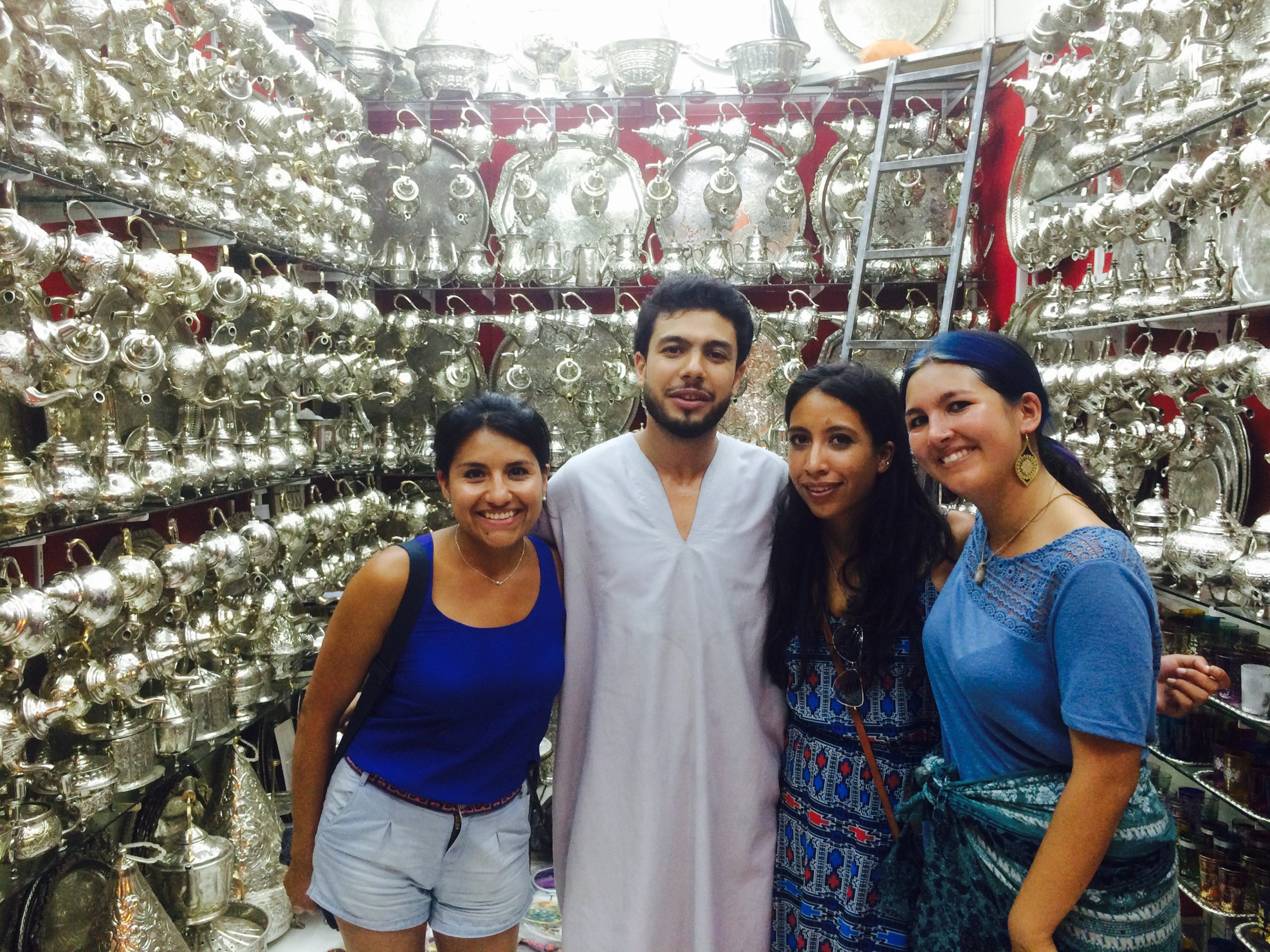
Exploring the souks of Marrakesh, where we met Mohamed and his traditional Moroccan teapot stand and found a store of traditional Moroccan sweets.
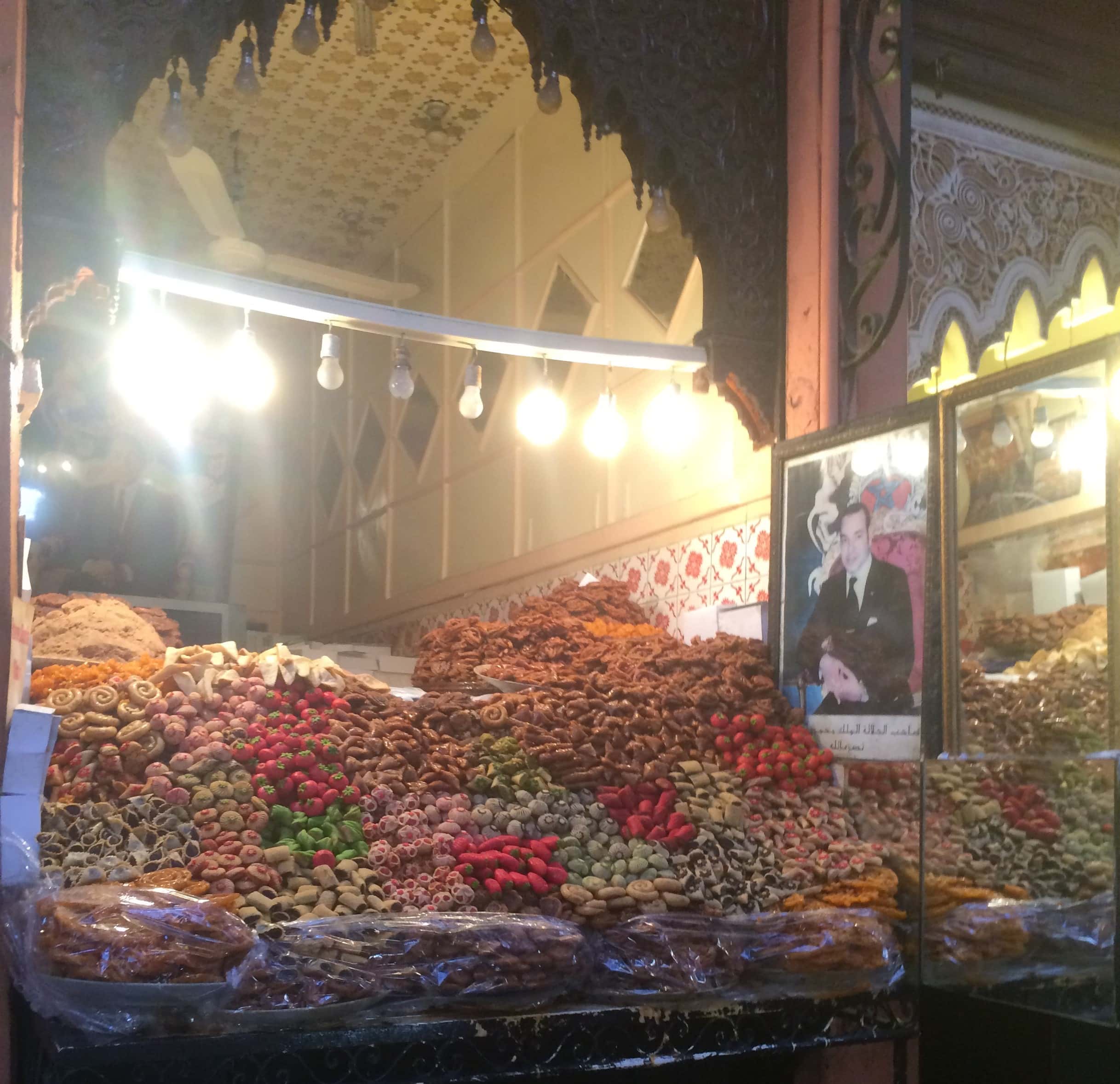
But Marrakech is not all about the Market and its souks. By the south wall of the Medina, we visited the Saadian Tombs.
In the 13th century, Marrakech stopped being the capital of Morocco and was left to its own luck for many years. The Saadi dynasty was the one who saved the city from its decline and made it the capital of the country once again. They ruled Morocco for a hundred years and are famous for defending the country against the Ottomans and Portuguese invasions.
Their necropolis is decorated with tiles and carved cedar and contains 66 marble royal tombs from the 16th and 17th centuries. Outside, the graves of servants and guards all point towards Mecca.
The complex is located in the Kasbah quarter, a commercial area from where we took a calèche (a fancy carriage pulled by horses) to the New City. In 1912, Morocco became a French protectorate, and this new area of Marrakesh is a blend of Arabic, North African, and art deco architectures. The best building to see this cultural amalgam is the Majorelle Garden, built by the artist Jacques Majorelle, who was also a botanist and invented the blue shade (so he said) that he used to paint the house. The garden has dozens of different types of birds and species of cacti. Inside the house, you’ll find the Islamic Art Museum. The building was later owned by Yves Saint-Laurent, whose ashes were scattered in the garden.
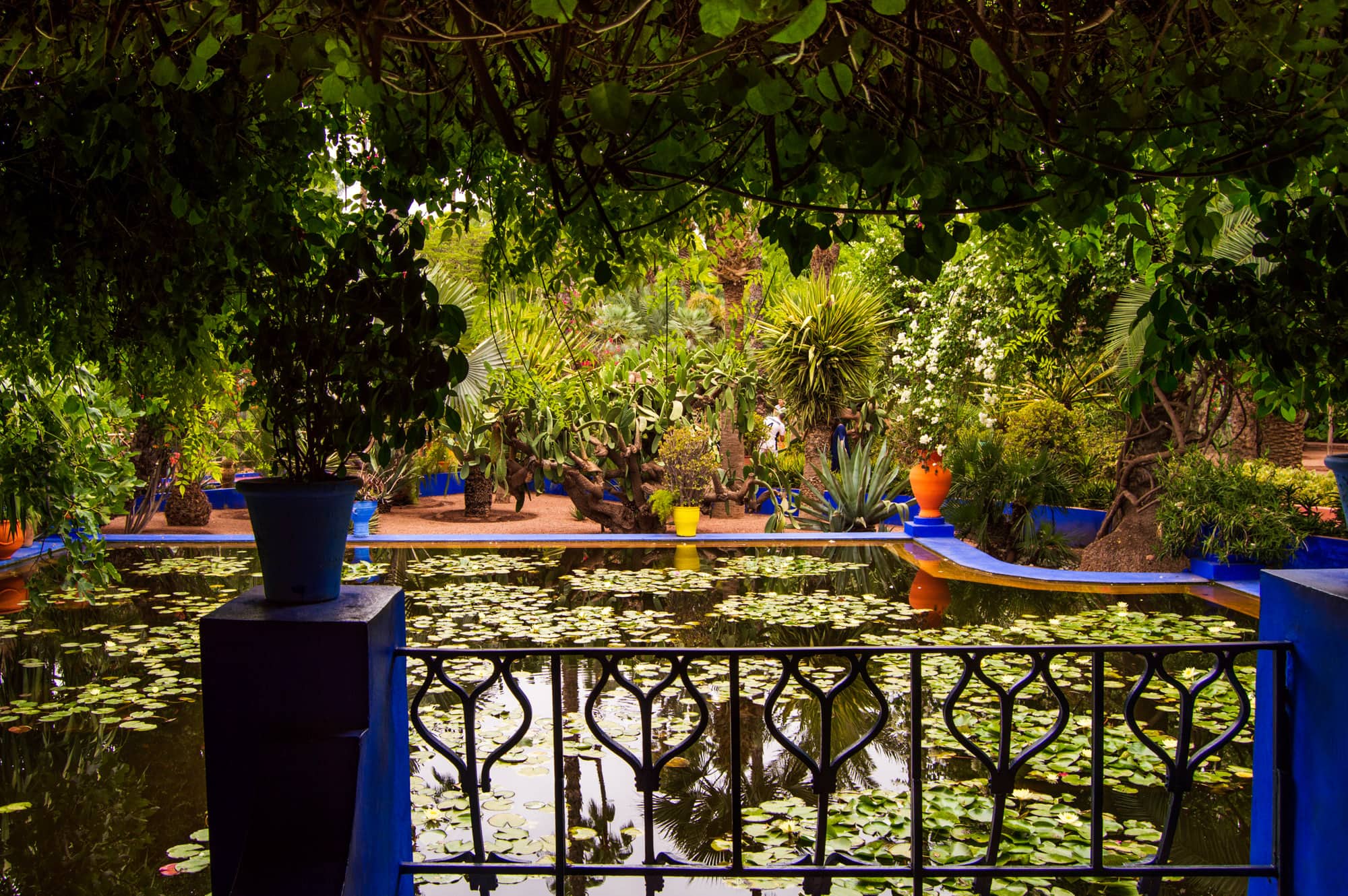
A pond in the courtyard in Majorelle Garden.
In the evening, we went back to the Medina to stroll along the city’s central square, Jemaa el-Fnaa, and visited the outside of the Koutoubia Mosque. As non-Muslims, we were not allowed to enter the building but were invited to admire the beautiful rose garden surrounding it.
The second dynasty that ruled over Marrakech was the Almohads, who built this mosque to show their supremacy over the defeated Almoravids in 1157. Its minaret is 77 meters high. Being the tallest building in the Medina, it is forbidden to build taller structures in the area. The turquoise tiles on the top contrast with the orange clay it’s built with, and the legend says the last orb at the top of the spire is made of gold from the jewels of a Sultan’s wife who broke her fast during Ramadan.
During the day, people at Jemaa el-Fnaa sell crafts, orange juice, and water, and it’s almost empty because of the summer heat. However, when the sun sets, this plaza turns into a chaotic night market. If you are not used to big crowds, get ready, because it’s the busiest square in Africa!
Henna tattoo makers, herbalists, acrobats, storytellers, and fortunetellers arrive first. Then, the plaza crowds with more particular characters: snake charmers, magicians, healers, “dentist” that offer to pull out your aching teeth in the spot, teachers ready to share their knowledge; people selling monkeys, lizards, marihuana, and other mystical substances; cooks in stands serving traditional dishes from all around Africa; and the most intriguing for me, men dressed as exotic female dancers (we learned that men do these shows because, in a more traditional past of Morocco, women were not allowed to dance like this).
Of course, you’ll need to bargain a fair price to see any of these street performers. And keep in mind that taking pictures is a different negotiation. Many performers will ask you for money if you’re planning to photograph or record their shows, but others will not allow having their pictures taken at all.
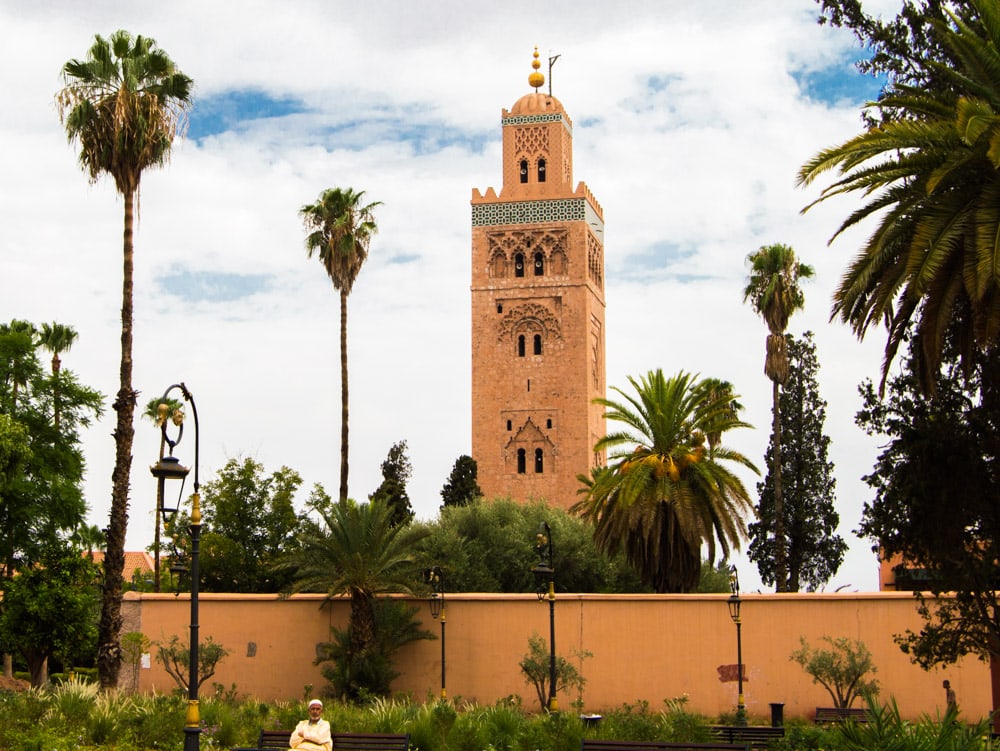
The word “Koutoubiyyin” means librarian. The mosque was named this because it stands in the spot where more than a hundred booksellers traded books when Marrakech started to gain popularity.
At the edge of the Sahara, Marrakesh is an ancient city where the Arab world of North Africa meets the Sub-Saharan cultures. Though modernity reached it a long time ago, the enchantment of its medieval souks keeps attracting people from all around the world. Maybe that’s the reason the Rolling Stones, the Beatles, and other hippies at the time considered it a paradise and inspiration for their mystical music.

Prices
(in Moroccan Dirhams)
- Stay in Riad Dia: 180DH per night
- Saadian Tombs: 70DH
- Majorelle Garden and Islamic Art Museum: 100DH
- Ali Ben Youssef Madrasa: 60DH
Currency Conversion
- 10 USD: 90DH
- 10 EUR: 106DH
- 10 CAD: 71DH
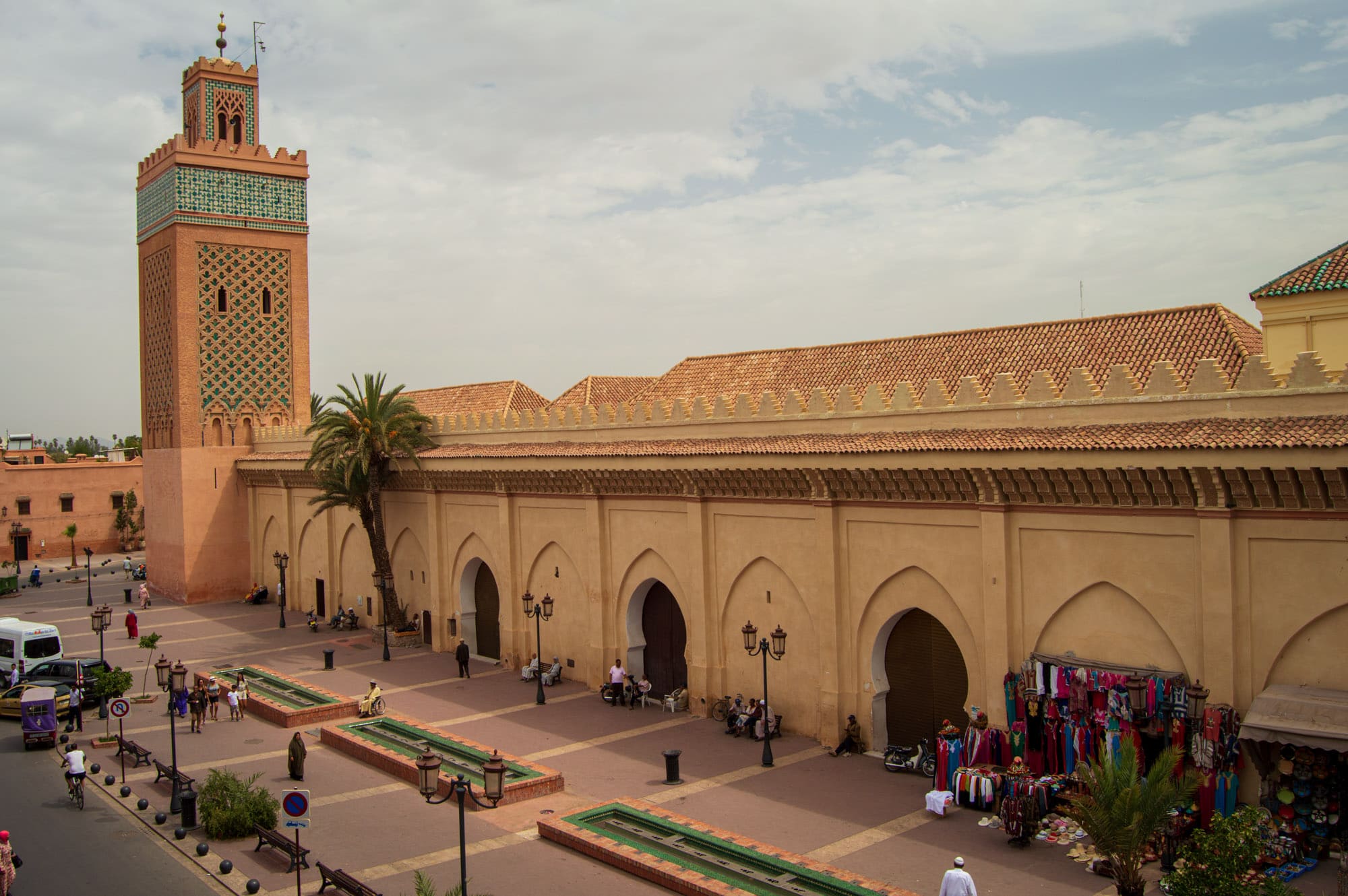
Under Mountains in the Moon Souvenirs
Want to display the beauty of the Sahara at home?
My travel photography prints and greeting cards make great gifts for all travel lovers!
